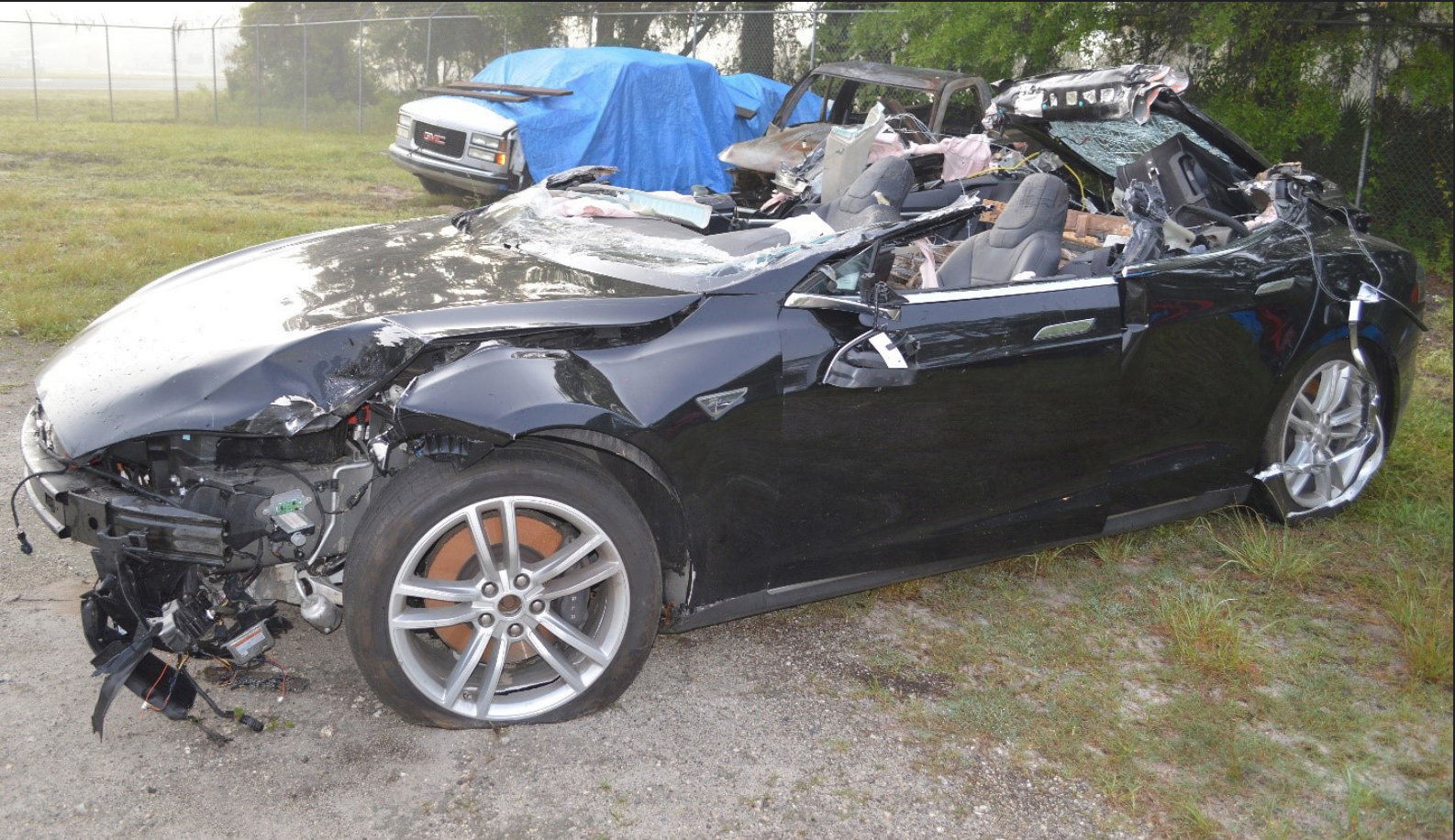Federal vehicle safety regulators are partly to blame for the death of two passengers in a crash of their semi-autonomous Tesla over the weekend because officials ignored calls from government safety experts to require automakers to include driver monitoring technology in "driverless" vehicles, advocates said on Monday.
Police in the Houston suburb of Spring, Texas say the men — one 69, the other 59 — died on Saturday when the misleadingly named (and according to some users, dangerously ineffective) "Full Self Driving Autopilot" feature on the 2019 Tesla Model S failed to navigate a curve and crashed into a tree at a high rate of speed, sparking a battery fire that first responders were unable to extinguish for over four hours.
The head of the police precinct that responded to the crash told CNN that "investigators are certain no one was in the driver's seat at the time of the crash."
That prompted safety advocates to wonder why the luxury "autonomous" vehicle, which retails for over $66,000, does almost nothing to ensure that drivers are prepared to take control of the car if the "autopilot" system fails, except for a torque sensor which can be tricked by simply hanging a small weight from the steering wheel.
Despite its "self-driving" branding, none of Tesla's vehicles are capable of being safely operated on roadways without a human driver behind the wheel — a fact that the company itself has admitted to regulators in private correspondence.
The steering wheel sensor isn't the only piece of safety equipment that comes standard on a Tesla, but it is the only one that was likely activated at the time of the crash. Since 2017, all of the company's cars have been outfitted with a cabin-facing camera equipped with artificial intelligence that senses when a driver abandons the wheel, uses his cell phone, or simply takes his eyes off the road for an extended period. But those cameras weren't put into use until a software update last year that allowed drivers to voluntarily opt into an unspecified safety-related beta program; CEO Elon Musk has said he only included the camera in anticipation of passengers vandalizing the vehicles when Teslas are one day used as autonomous taxis.
Unlike other driver monitoring systems on the market, Tesla's system doesn't even alert its drivers to stop being reckless, nor does it automatically slow the car to a safe stop if customers repeatedly ignore automated warnings.
Just three months ago, the National Transportation Safety Board reminded regulators at the National Highway Traffic Safety Administration that "autonomous vehicles must give alerts to capture the attention of a driver or operator and allow sufficient time for the person to respond and assume the dynamic driving task for any level of automation that may require human intervention."
The influential government agency made that recommendation over a year ago following a probe into the 2018 death of a 38-year-old driver in Mountain View, Calif, who died when his semi-autonomous car failed to recognize a jersey barrier — and he failed to stop playing a cell phone game and take control of the car.
Just heard Tesla is a dangerous vehicle. Maybe I missed something here. Can someone or #TSLAQ tell me where Tesla stands in the graph below showing the most fatal vehicle brands (fatalities per 1k vehicles sold)?
— Ray (@ray4tesla) April 19, 2021
Detail report here: https://t.co/j4TsAiZy5A pic.twitter.com/InkdfsRXIO
Tesla advocates were quick to come to the company's defense, estimating that the vehicles are only involved in about 0.15 fatal crashes for every 1,000 vehicles sold — a number which, if accurate, would amount to a small fraction of other automakers' per-vehicle death rate. But even if that unverified math is correct, safe streets advocates say the company still isn't doing enough to prevent traffic deaths — just like every other automaker, regulator and road designer in America.
Notably, the NTSB did not include non-autonomous cars in its plea for NHTSA to make driver monitoring systems mandatory on all new vehicles — though some advocates think such systems should be required, if only to prevent the most easily-avoidable deaths, like those caused by impaired driving. The agency did call for an end to distracted driving in its biannual Most Wanted List, but did not specifically name-check cabin-facing cameras or driver distraction alerts in the notice, focusing instead of enforcement-based solutions like texting laws.
Even if the Board does strengthen its recommendations, there's no guarantee that regulators will follow its advice. Spokesman Chris O'Neil emphasizes that "it's well recognized that our safety recommendations are based on our comprehensive, expert understanding of the contributing causes to transportation disasters," but he also estimates that about 20 percent of those suggestions never become law.
The NTSB announced on Monday morning that it will investigate the Tesla crash, and make further recommendations to prevent other drivers of "driverless" cars from losing their lives. Perhaps next time, NHTSA will finally listen.






